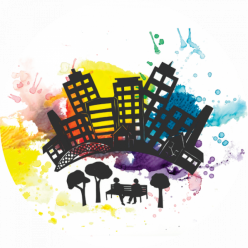A Poetic, Meaning-Making Public
I really like that quote from Walter Benjamin’s “The Storyteller” where he talks about how the storyteller is offering wisdom, or “counsel woven into the fabric of real life,”[1] as opposed to information. Wisdom is about is what makes life meaningful.
— Catherine Graham, TSDC Principal Investigator
In this second section of our 3-part storycircle blog series we discuss the ways storycircles foster collective and poetic meaning-making.
H: As an opening exercise storycircles have a way of bringing a group together as a kind of meaning-making “public.”
C: I remember many, many years ago when I first started working with the responses, being struck by how the meaning of a story, as well as the cohesion of the group, developed through sharing responses as much as through the telling of the stories themselves. Michael Warner’s work helped me understand what might be happening here. Warner tells us that there is a kind of public that comes to see itself as “we” by telling and responding to particular stories in particular ways. We become part of this public not because of who we are, but because of what we do: we talk about the same things, we talk about them in particular ways, and we come to recognize each other as part of the group that will help these stories circulate to create social meaning, perhaps even demanding action by authority figures in response to that meaning.
As Warner puts it, “a public is constituted by mere attention.”[2]Attention is, of course, a very valuable commodity in a busy world and we see this in the reactions in our storycircle. Participants often find the process of telling stories, listening attentively, and hearing others responses to their stories, leads to a profoundly moving experience. I think a part of the reason for the depth of response is that the process offers an experience of building a public together early in the performance creation workshop process.
H: In the TSDC storycircle there’s a clear distinction between listening, as in paying attention, and the more habitual ways we sometimes perform listening — like interjecting, asking questions, or relating our own experiences back.
C: … which is interesting in the way the storycircle structures time. The storycircle structure creates different moments in which to do different things, which means you can really concentrate on one thing at a time: you will need to demonstrate that you have paid attention, but not right now. Your role as a listener in the storycircle is just to pay attention and really try to take in what this person is telling you — and there will be another moment when you will demonstrate that the story has been heard by sharing your response to it.
And the form of the response is deliberately constructed. Starting with the question, “what colour is this story?” undermines any notion of an authoritative assessment of what the story means. That was the reason why I put the colour question in, because nobody thinks there is a favorite colour that should be everybody’s favorite colour so without giving people a lecture about how there is no right answer, you just performatively demonstrate that it’s possible to respond to something out of your own feeling about it and to own, “this is my feeling about it.”
H: And exiting that authoritative model allows people to enter into a really different kind of creative and imaginative model.
C: It makes us pay attention to how we make meaning, but also, right from the beginning, it performatively says, everybody will be listened to, everybody’s perspective is important to us, everybody has a right to have an opinion. It’s not just the content of what happens that’s important, it’s the performative learning to be together and to value everyone and to try to honestly respond, but at the same time to try to understand how we’re making meaning together.
One person can say, “This is the story of a person who is really suffering” and someone else can say, “This is a person who is really courageous” and both those things can be true, as we go around the circle we’re getting a fuller picture of what this story might mean. Or sometimes we’re re-enforcing something, for instance if everyone goes around the room and says this is a story of someone who is really courageous and we start to read the story of a single mother who is struggling to raise kids on OW (Ontario Works, a form of social assistance) as a story of courage, not as the story of failure it is often portrayed as in the wider world.
H: People seem to feel, not just heard, but like there’s like there’s a gift being given back, there’s this reciprocity.
C: … that’s an interesting way to think about it.
H: … because the responses aren’t saying, “let me tell you verbatim what you just said’, or ‘let me prove to you that I was listening…”
C: … yes, it’s not a test.
H: … through the responses, a person’s story becomes richer, more layered.
C: Sometimes I hear things in people’s response to my story that help me to recognize an importance in what I experienced — to me that was just something that happened — but the responses help me see that it’s meaningful. That’s something I think we need to talk about in relation to the storycircles, is the difference between documenting what happened and showing what it means to us that that happened.
to be continued…
[1] Benjamin, Walter. “The Storyteller: Reflections on the Works of Nikolai Leskov.”Illuminations, trans. Harry Zohn; ed. & intro. Hannah Arendt. NY: Harcourt Brace Jovanovich, 1968: 86-87.
[2] Warner, Michael. “Publics and Counterpublics.” Public Culture 14(1): 49-90

